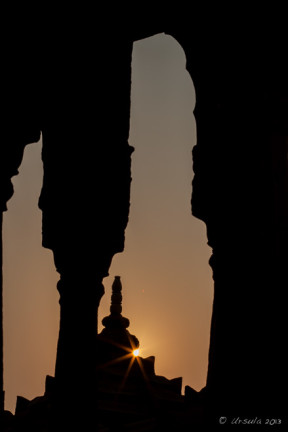
Sunburst on the Chhatri
Afternoon at Vyas Chhatri, Jaisalmer.
They say you are a long time dead and buried –
Well, unless you are buried in Switzerland, where your plot is reclaimed after 25 years to recycle available land. Or, unless you are in a traditional Chinese cemetery, where your bones should be taken out and washed annually…
In India, honouring the dead can take many varied forms. Although most Hindus are cremated, as I and my companions learned on the Ghats at Varanasi, sadhus do not need burning, for they are deemed to be already pure. They, therefore, are wrapped in a cloth or rug and tipped into the Mother Ganges. Their bodies can be seen, floating in the murky waters.
At the other extreme, the Mughal emperors built elaborate mausoleums so that they, and their families, would be remembered forever. Perhaps the most magnificent of these, the Taj Mahal, stands as a testament to love and to architecture.
The arid, desert landscape around Jaisalmer is punctuated by pagodas, built from the local golden sandstone, on the cremation sites of the wealthy and powerful. Each of the region’s traditional Bhatti (Yaduvanshi) Rajput rulers built a cenotaph to commemorate their reign.
If you read the revues on TripAdvisor etc., what distinguishes these sites today is their dereliction. Although they are advertised to – and frequently visited by – tourists, (especially as places to enjoy desert sunsets) they are neglected and uncared for.
It was, in part, this very dilapidation that added to the eerie atmosphere of quiet that surrounded the Vyas Chhatri cenotaphs close to Jaisalmer when I visited late one November afternoon.
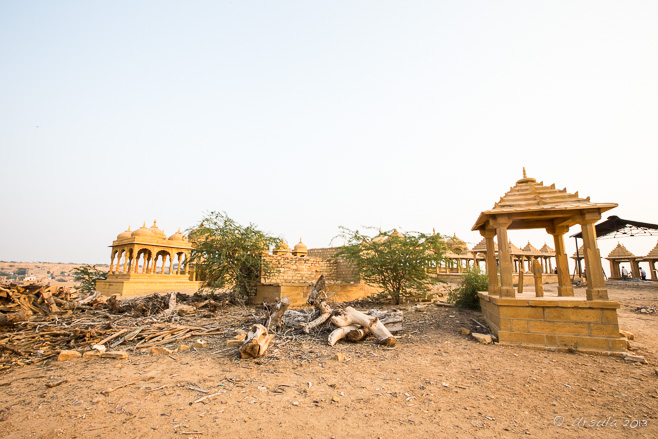
Into the Cenotaphs
Strewn with rubbish and firewood, and falling into disrepair, the cenotaphs are a symbolic “mark of respect” to those who were cremated here.
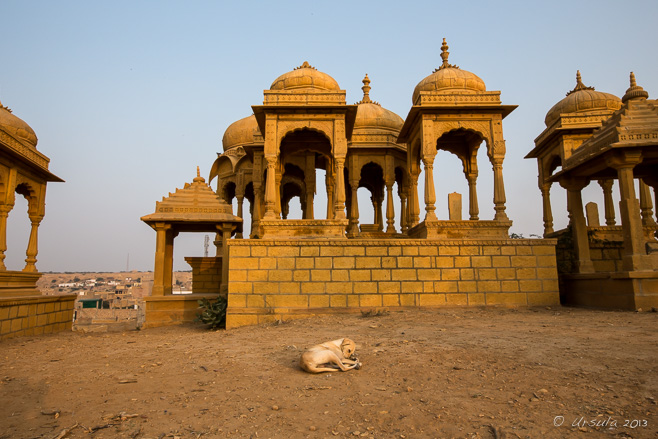
Sleeping Dog
A stray dog sleeps – oblivious to the pending onslaught of afternoon tourists.

Cenotaph
You can see residential buildings – and other cenotaphs – not so far away.

Pavilion
Chhatris are dome-shaped pavilions commonly used in Rajput architecture to depict pride and honour.

Playing the Algoza
The haunting sounds of the Indian double flutes wafting on the afternoon air adds to the atmosphere.

Domes
Afternoon light on the domes of the chhatri highlights the delicate carving.

Square Pavilions
Just visible in the background is the metal cover over the burning platform which is still in use for Brahmin cremations.

Chhatris and Sky

Playing the Algoza
A traditional musician plays for the tourists, hoping to sell CDs.

To the Vantage Point
Tourists walk uphill with cameras and tripods to catch a desert sunset.

Playing the Algoza
Meanwhile, in another nook, another man plays music, …

Hands on the Algoza
… deftly fingering both flutes.

Tourist and Camera
Tourists are everywhere – trying to catch the fast-falling light.

November Sun
The autumn sun drops quickly in the sky…

Vyas Chhatri Sunset
… until the landscape almost disappears.

Pagoda Sunset
Last light in the Vyas Chhatri pagodas.
Dusty, dirty, strewn with rubbish and falling into disrepair, true.
But also, atmospheric, mysterious, and alive with history…

Like the whole country, really.
Incredible India!
Namaste!
Photos: 07November2013


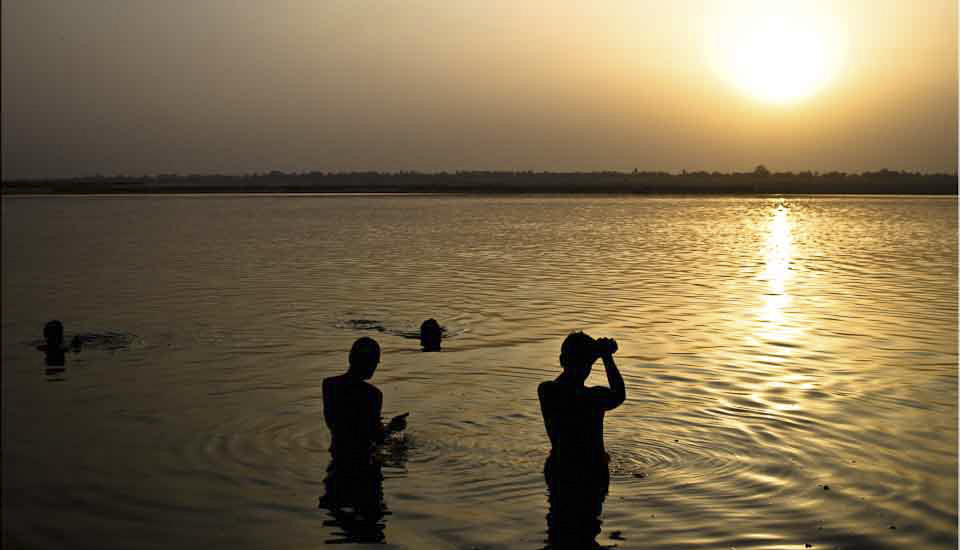



















.jpg)
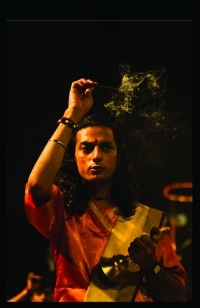

leuke serie. Ik heb er mooie herinneringen aan Jaisalmer. Fijne dag en groetjes, Dietmut
Greetings, Dietmut!
Thanks for your visit. I, too, have fond memories of Jaisalmer. I love Rajasthan. Cheers!
[…] look like umbrellas (Chhatri) depicted in the honor of noble ones. Enjoy your evening trip with spectacular sunset views […]